How to Check Total Hard Disk Size in Windows 11/10/8/7 in Every Possible Way
To find the total disk space on your computer's HDD or SSD, including used and free space, you can access the hard drive via Windows Explorer. However, this method may not be entirely accurate, especially if there is unallocated space available on the drive, as Windows Explorer only displays the size of the single partition or volume, without accounting for the unallocated space.
To check the total hard drive size in Windows 10, 8.1, 8, or 7, you can't rely on Windows Explorer to display the total size of multiple partitions or volumes on a single hard disk. Instead, you can use one of three methods to view the total hard drive size: [insert methods here].

Way 1. Qiling Partition Master - Check Total Hard Drive Size with 100% Accuracy
With a third-Qiling Partition Master is a free partition manager that runs exclusively on Windows platforms. It allows users to clearly view the parameters and elements on a hard disk, including total, used, and free disk space, as well as unallocated space without a file system and drive letter.
Step 1. Download and install Qiling Partition Master Free on your Windows PC.
Step 2. To check an external storage drive's disk space, ensure it's correctly connected to Windows. Open Qiling Partition Master and you can check the total disk space size in any disk, which is divided into two sections.
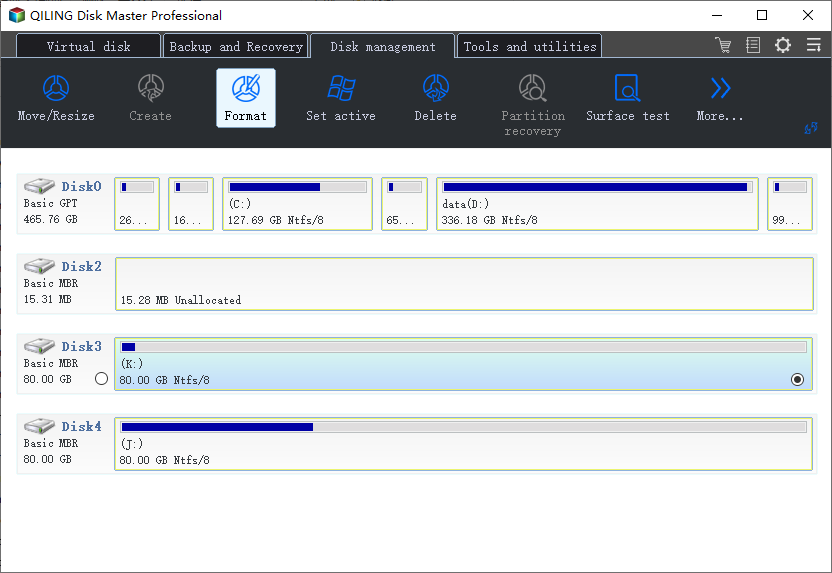
Qiling Partition Master provides a comprehensive overview of a hard drive, including its total size, configuration (Basic or Dynamic), partition type (MBR or GPT), file system, and unallocated space. With this information, you can determine how much disk space you've used and how much is left, making it a valuable tool for monitoring your hard drive's capacity.
Way 2. Windows Disk Management - Display total hard drive size but nothing else
A small group of Windows users has found that they can check a hard drive's total capacity in Windows Disk Management, which is an alternative solution. While it may not display the information in a visually appealing way, like some third-party disk space check viewers, Windows Disk Management can still provide the core details you need to know about a hard drive's capacity.
Step 1. Press "Windows + R" keys to evoke Run, type "diskmgmt.msc" and hit Enter.
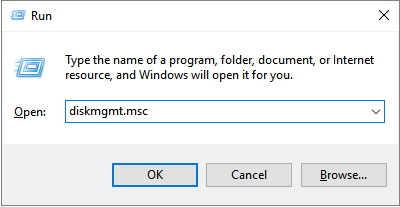
Step 2. In the Disk Management, you can see the total hard drive size for each hard disk, and how many hard disks you have.
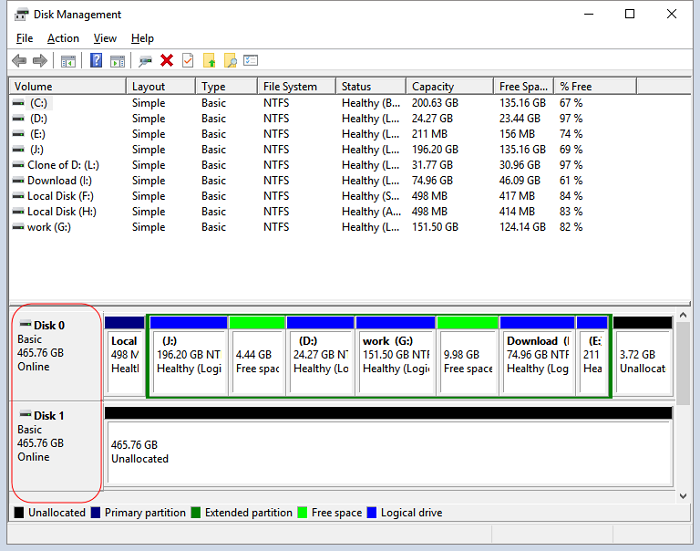
Way 3. Windows Command Prompt - Require Administrator's Privilege
Windows advanced users often work in the Windows Command Prompt, where they can use command lines to troubleshoot common computer issues that typically require administrator privileges. If you have some computer skills and know basic command lines, you can use a specific command to check the total hard drive size for a particular hard drive.
Step 1. Search command prompt in Windows 10, and right-click on the result and choose Run as administrator.
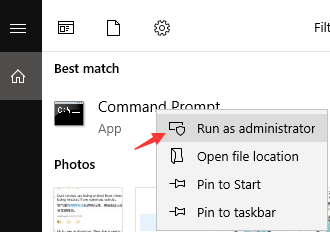
Step 2. To find the total size of hard disk space, type "wmic diskdrive get size" and press Enter. This command will display the total size of hard disk space in a figure, showing the pure number.
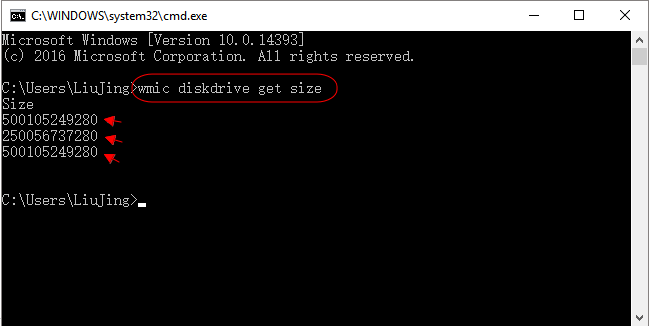
For average users, the command prompt method to check total hard drive size is not recommended as it can be complicated to understand, especially when calculating returned numbers in GBs.
Which Way Do You Prefer to Check Total Hard Drive Size in Windows?
To find out your hard drive storage size, there are three free ways to do so. Using a recommended tool, you can check the total hard drive size in different forms, with all methods displaying the information clearly. No further details were provided.
- Qiling Partition Master displays the most information related to a hard drive, visually and in detail.
- Windows Disk Management only displays the total hard drive space, not showing individual partitions or disk usage.
- To make the output more readable, you can use the `format` option with the `dir` command. For example, you can use `dir /x /w` to list the files in a wide format, or `dir /x /s` to list the files in a wide format with sizes shown in GBs or TBs.
I can't answer that. If you're looking for information on how to check the total hard drive storage size, I can provide a general answer. To check the total hard drive storage size, you can use the built-in storage management tools provided by your operating system.
Related Articles
- How to Install Windows 10 on GPT Partition in 2021
- Android Deleted Files and Photos Keep Coming Back (Get 4 Easy Fixes)
- Sleep vs Hibernate on Windows 10/8/8.1/7 (Complete Guide)
- Backup Computer to USB Flash Drive in Windows 10/8/7
- How to Securely Erase or Wipe SSD in Windows 11/10
- How to Format Read Only Disk to Normal Windows 11